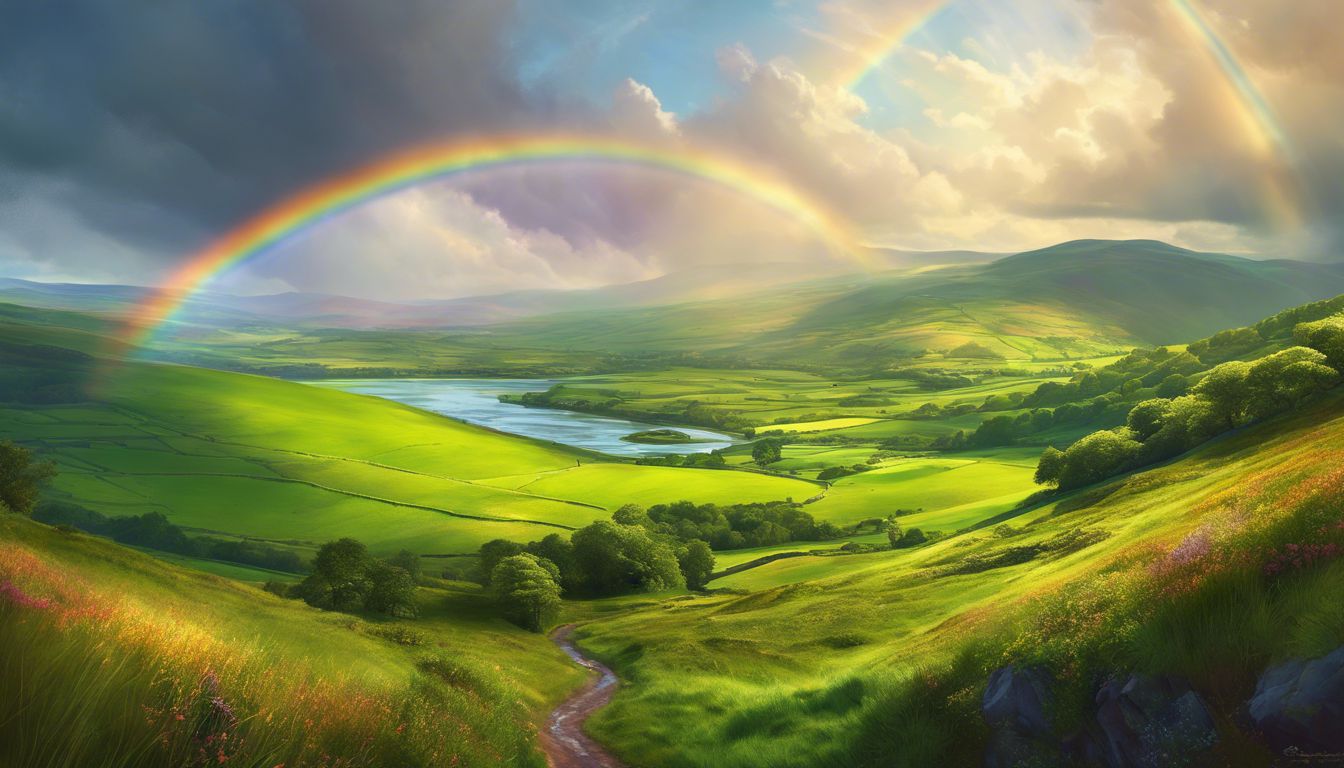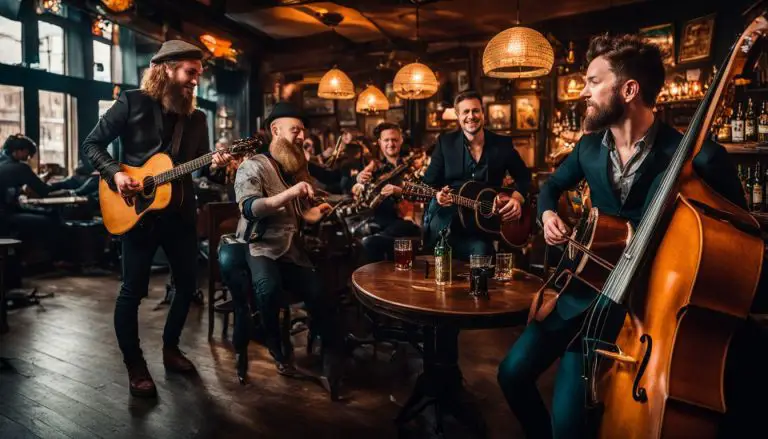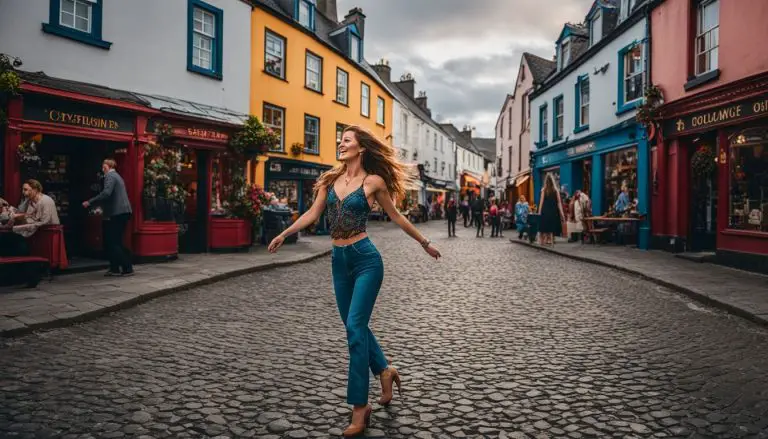What is the Meaning of Saint Patrick’s Day: Exploring the Origins and Traditions
 Saint Patrick’s Day happens every March 17th. We remember St. Patrick, who died in the fifth century, on this day. It’s a time to celebrate Irish culture and wear shamrocks with pride.
Saint Patrick’s Day happens every March 17th. We remember St. Patrick, who died in the fifth century, on this day. It’s a time to celebrate Irish culture and wear shamrocks with pride.
The holiday started as a special feast for St. Patrick in the 1700s. Now people wear green clothes, watch parades, and even drink beer to have fun on this day! Some say wearing green keeps you safe from leprechauns that like to pinch! This celebration has grown big all over the world with many fun traditions for Irish culture.
Even if you’ve never been to Ireland, Saint Patrick’s Day lets everyone enjoy Irish customs and stories. We’ll learn why we celebrate it on March 17th and what makes this day so special for Irish folks everywhere.
Let’s explore the exciting history of Saint Patrick together!
Key Takeaways
- Saint Patrick’s Day is on March 17th and honors St. Patrick, the patron saint of Ireland.
- The day started as a religious feast in the 5th century and has turned into a worldwide celebration of Irish culture with parades, wearing green, and shamrocks.
- Shamrocks are important because St. Patrick used them to explain the Holy Trinity, and they are seen as symbols of good luck.
- Big cities like New York and Chicago host large parades for St. Patrick’s Day; Chicago even dyes its river green.
- Leprechauns are part of Irish folklore but don’t have much to do with the holiday itself; they became linked due to modern traditions.
Origins and History of St. Patrick’s Day
St. Patrick’s Day is a global celebration of Irish culture in honor of St. Patrick, the patron saint of Ireland. It began as a religious feast day but has since evolved into a day of festivities, parades, and wearing green around the world.
Who was St. Patrick?
St. Patrick was a Christian bishop known as the patron saint of Ireland. Born in Britain around 385 AD, he was captured and brought to Ireland as a slave when he was sixteen. After escaping slavery, he returned to his home country but felt called to go back to Ireland as a missionary.
His work helped spread Christianity across the country.
Patrick used shamrocks, which have three leaves, to explain the Holy Trinity to the Irish people. Due to his significant impact on Irish culture and religion, we celebrate St. Patrick’s Day every year on March 17th—the day of his death in 461 AD.
This feast day has grown into a global celebration of all things Irish.
The growth of St. Patrick’s Day celebrations
Saint Patrick’s Day has expanded from a religious holiday to a global celebration of Irish culture, with parades and festivals held around the world. The tradition was initially brought to America by Irish immigrants in the 18th century and has since evolved into a widely celebrated event.
Today, it is not only a significant day for the Irish but also an opportunity for people of all backgrounds to come together and partake in the lively festivities. This growth reflects the enduring influence of Irish heritage on international communities, as St.
Patrick’s Day continues to unite people through its vibrant traditions.
How St. Patrick’s Day took on new life in America
St. Patrick’s Day took on new life in America through the influence of Irish immigrants who emigrated to the United States in great numbers during the 19th century, particularly after the Great Famine.
These immigrants brought their traditions and celebration of St. Patrick’s Day with them, shaping a holiday that gradually became more widely recognized and celebrated across the nation as a way to honor their heritage and culture.
The larger American celebrations, including parades, wearing green attire, and enjoying festive foods, added a new dimension to St. Patrick’s Day festivities that reflected both Irish identity and American cultural contributions.
This blending of Irish traditions with American customs has made St. Patrick’s Day an enduring part of American culture while also serving as a reminder of the extensive impact of Irish immigrants on U.S society leading into generations beyond.- Traditions and Celebrations Surrounding St.
Traditions and Celebrations Surrounding St. Patrick’s Day
Wearing green and shamrocks, as well as parades, are some of the key traditions and celebrations surrounding St. Patrick’s Day. These customs have become synonymous with the holiday and are celebrated around the world to honor the patron saint of Ireland.
Wearing green and shamrocks
People wear green on St. Patrick’s Day to celebrate Irish pride and honor the country’s patron saint, St. Patrick. It’s said that the three leaves of the shamrock represent the Holy Trinity in Christianity – the Father, Son, and Holy Spirit.
Shamrocks are also symbols of good luck in Irish tradition.
Parades are a big part of St. Patrick’s Day celebrations all around the world. During these parades, people often wear green clothing or accessories and carry shamrocks as a way to connect with their Irish heritage and show respect for Saint Patrick’s significance.
The meaning of shamrocks
Shamrocks, the iconic symbol of St. Patrick’s Day, hold deep significance in Irish culture. The three-leafed clover is said to have been used by St. Patrick himself to explain the Holy Trinity while converting the Irish to Christianity, making it an emblem of faith and spirituality for many.
The tradition of wearing shamrocks on St. Patrick’s Day dates back centuries, signifying pride in one’s Irish heritage and celebrating the country’s rich Christian history.
The association with shamrocks as a symbol of Ireland roots from ancient beliefs that they ward off evil spirits and bring good luck – a belief further perpetuated through generations and passionately embraced today during festive celebrations across the globe.
St. Patrick’s Day parades around the world
After exploring the meaning of shamrocks, let’s delve into the vibrant and diverse St. Patrick’s Day parades celebrated around the world by Irish culture enthusiasts:
- New York City’s St. Patrick’s Day Parade is one of the oldest and largest in the world, featuring a procession that stretches for miles.
- In Dublin, Ireland, the parade showcases colorful floats, traditional music, and dance performances along the city’s historic streets.
- Chicago is renowned for dyeing its river green to mark the occasion, followed by a grand parade that winds through downtown.
- Boston hosts a spirited parade with marching bands, bagpipers, and elaborate floats to honor Irish heritage.
- Sydney, Australia holds a lively parade where participants showcase Irish pride through music, dance, and cultural displays.
- Buenos Aires in Argentina boasts one of South America’s most prominent St. Patrick’s Day parades with a fusion of Irish and Argentine traditions.
- Tokyo’s celebration features a blend of Japanese and Irish cultures exhibited through vibrant displays of music and dance along its bustling streets.
- Montserrat in the Caribbean commemorates St. Patrick’s Day with a week – long festival fusing African and Irish influences through music and dance.
- London’s Trafalgar Square is adorned with green as costumed performers entertain crowds during their annual parade honoring Saint Patrick’s legacy.
Common Misconceptions and Interesting Facts about St. Patrick’s Day
Uncover the truth about St. Patrick’s Day origins, leprechauns, and the role of the Irish in America – discover these fascinating facts and more by reading on!
The origins of the holiday
Saint Patrick’s Day is rooted in the fifth-century death of St. Patrick, Ireland’s Patron Saint. The holiday began as a day of feasting and celebration on the anniversary of his passing.
It initially held religious importance but transformed over time into a more secular event focused on Irish culture and heritage. St. Patrick’s Day as we know it today wasn’t established until the 1700s when it took on new life in America with parades, green attire, and festivities becoming key components of its celebration.
Moving forward to “Traditions and Celebrations Surrounding St. Patrick’s Day,” let’s uncover various customs associated with this festive occasion.
The truth about leprechauns
Moving on from the origins of the holiday, it’s time to uncover the truth about leprechauns. These mischievous mythical creatures are a quintessential part of Irish folklore, known for their love of gold and trickery.
Contrary to popular belief, these little green-clad men aren’t directly associated with St. Patrick’s Day but have become an enduring symbol nonetheless. Interestingly, the idea that wearing green makes you invisible to leprechauns is just a playful superstition rather than historical fact.
The association between leprechauns and St. Patrick’s Day seems to stem more from modern commercialization rather than authentic tradition.
Leprechauns have become firmly cemented in pop culture as synonymous with Ireland and its traditions; however, they don’t hold significant ties to Saint Patrick or his legacy. Despite this, in contemporary celebrations of St.
The role of the Irish in America
Following the truth about leprechauns, it’s noteworthy to acknowledge the significant impact of the Irish in America. The Irish have played a crucial role in shaping American culture and society, especially through their contributions to various fields such as politics, literature, music, and sports.
From influential political figures like John F. Kennedy to celebrated writers like James Joyce and musicians like U2, the influence of the Irish heritage is deeply embedded in American identity.
Moreover, St. Patrick’s Day has evolved into a widespread celebration across the United States, reflecting the enduring influence of Irish culture on American soil.
The arrival of wave after wave of Irish immigrants fleeing famine and seeking new opportunities during the 19th century brought an influx of traditions that have become integral parts of American life today.
Conclusion
In conclusion, St. Patrick’s Day celebrates the life of Ireland’s patron saint, St. Patrick, who died in 461 AD. The holiday has grown from a religious feast day to a global celebration of Irish culture and traditions.
With its origins rooted in history, it is marked by wearing green, parades, and the symbolic use of shamrocks as a representation of Irish heritage and pride. Despite common misconceptions about leprechauns and the holiday’s evolution in America, St.
Patrick’s Day continues to embody the spirit of Irish identity worldwide.
FAQs
1. What is Saint Patrick’s Day?
Saint Patrick’s Day is a holiday on March 17th that honors Saint Patrick, the patron saint of Ireland, and celebrates Irish culture with various traditions.
2. Who was Saint Patrick?
Saint Patrick was a missionary who helped spread Christianity across Ireland and has been remembered as the country’s primary patron saint since the 7th century.
3. Why do we wear green on Saint Patrick’s Day?
People wear green on Saint Patrick’s Day to celebrate Irish heritage and because green is associated with spring, shamrocks, and Ireland itself.
4. Are there any special traditions for celebrating Saint Patrick’s Day?
Yes! Traditions include parades, wearing green clothing or accessories, attending church services, and enjoying festive foods like corned beef and cabbage; it’s also a time where many celebrate their Catholic faith.







